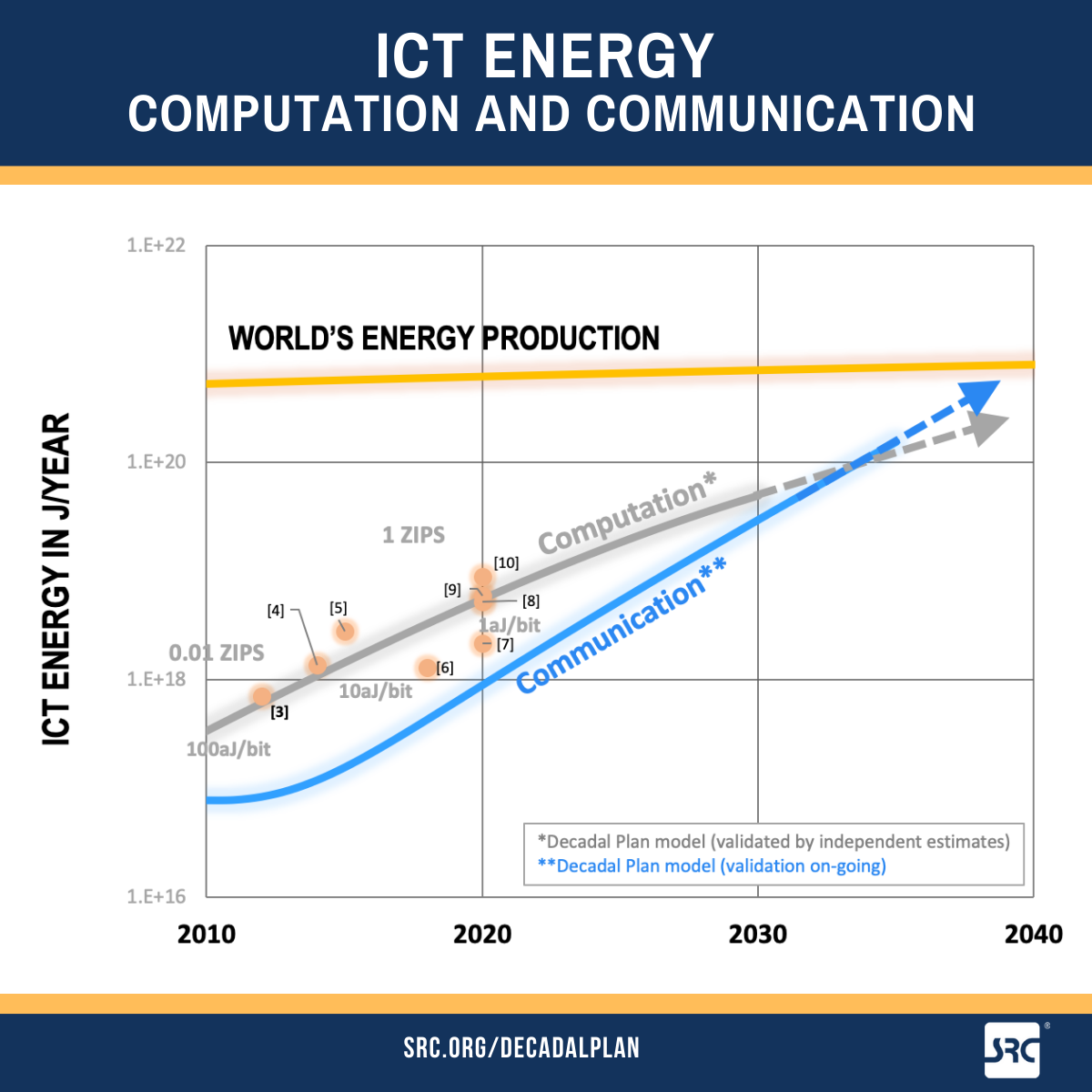Our Commitment to Sustainability
2021 Report

We can’t rely upon the status quo. We must call upon scientists and engineers to bring innovative new materials, ideas, products, and businesses to the market that would fail to exist if sustainability and environmental factors were not considered.
Letter from the President and CEO
October 27, 2021
Semiconductor innovation has spurred the greatest period of technological advancement in the history of humankind, transforming every aspect of our lives. Today, "chips" serve as the brains and sensory systems that provide functionality to the world’s most advanced information and communication technologies (ICT). They drive and monitor our energy grids, servers, phones, automobiles, and, more recently, our smart homes.
ICT is undergoing what many describe as "super-exponential growth," increasing the volume of chips around us per capita throughout the decade. A modern car, for example, can easily have more than 3,000 chips.[1] And Cisco has estimated that there are 3.6 networked devices per person, globally, as we move into 2022.[2]
We embark on an era of unprecedented production at a time when global sustainability has never been more important.
The World Economic Forum’s Global Risk Report[3] continually lists human environmental damage, biodiversity loss, climate action failure, and extreme weather as clear and present dangers that pose an existential threat to humanity.
As an R&D community, we have an obligation to do more to ensure that the growth in chip manufacturing and packaged chip volumes is as environmentally benign as possible and does not put additional stress on our already taxed environment. This concept must be factored into our materials, chipmaking, and packaging—often and early—and not become a costly late stage success metric or cleanup exercise.
Earlier this year, we also highlighted a concerning trend, that the demands for computing are encroaching on global energy production levels.[4] Even with all of the improvements that Moore’s law has afforded to semiconductor hardware and the systems they power, our insatiable global appetite for ICT is yielding energy consumption levels that are creating a new headwind for the continued advancement of technology. This may limit the growth of our GDP or semiconductors as an industry if we don’t invest in the discovery of new computing paradigms and architectures with a radically improved (106:1)energy efficiency.
So, starting today, we commit to this simple sustainability principle:
Throughout the decade, SRC will drive an R&D agenda that delivers greener materials and processes for semiconductor manufacturing, creates semiconductor chips and packages with radically improved energy efficiency, and drives a revolution in the efficiency of future ICT systems at scale.
To do that, we can’t rely upon the status quo. We must call upon scientists and engineers to bring innovative new materials, ideas, products, and businesses to the market that would fail to exist if sustainability and environmental factors were not considered. We must rethink our ecosystem, seeking simplified and circular supply chains that can reduce, reuse, and recycle.[5]
Yet, this can’t be a Utopian experiment. Our effort must be informed by emerging state of the art, hidden costs, and cross-disciplinary, commercial insights so that our teams address the pain points that have stopped prior good-hearted efforts.
How can chemists, chipmakers, and the tech industry create a more sustainable and efficient world? Let’s find out and create that future, together!
Dr. Todd Younkin, President and CEO
Join us - https://webqa.src.org/about/membership/
References
- A Tiny Part’s Big Ripple: Global Chip Shortage Hobbles the Auto Industry, https://www.nytimes.com/2021/04/23/business/auto-semiconductors-general-motors-mercedes.html
- Reducing and Eliminating E-Waste, Communications of the ACM, July 2020, Vol. 63 No. 7, Pages 17-19, 10.1145/3398390, https://cacm.acm.org/magazines/2020/7/245692-reducing-and-eliminating-e-waste/fulltext
- The World Economic Forum’s Global Risks Report (2021), https://www.weforum.org/reports/the-global-risks-report-2021
- Seismic Shift #5 in the SRC 2030 Decadal Plan for Semiconductors is Compute Energy vs. Global Energy Production, https://webqa.src.org/about/decadal-plan/
- Thank you, Jack Johnson, for your "3 Rs song"!
Two Main Initiatives Are Underway Today
Environment, Safety, and Health (ESH) Program
- Started in current form in 2015, with ESH budget growth of ~%18 YoY to $1.25M/yr. in 2022.
- Since 2015, our ESH program has funded 28 research tasks involving 13 universities, 45 faculty, and 70 students.
- Industry members include Texas Instruments, GlobalFoundries, IBM, Intel, Micron, and EMD Electronics.
- Micron and EMD Electronics are our newest ESH members, joining in 2021.
- ESH looks to explore pathways to greener materials and processes, which are critically important to enabling environmentally friendly and sustainable manufacturing solutions for future semiconductor hardware.
- Areas that need specific focus include:
- Assessment of potential environmental and human health risks associated with current and emerging materials and chemistries.
- Development of more environmentally preferable materials and chemistries that are more efficient, more effective, and safer.
- Treatment and abatement technologies for effluent, emission, and waste management.
- Improvement of processes and systems to reduce energy and material use and minimize waste generation.
ICT Energy Efficiency
- Following the publication of our 2030 Decadal Plan for Semiconductors illustrating Seismic Shift #5,[4] which expanded on the challenges and opportunities for ICT hardware with improved energy efficiency, we have tagged ~37% of the current SRC research portfolio, or 179 tasks, as aligned to this grand challenge.
- Additional studies performed by the Decadal Plan Committee since our publication of Seismic Shift #5 have yielded new data points for both the computation and communication trends of ICT energy per year. Validation of the communication model is ongoing.

- Energy efficient hardware breakthroughs include, but are not limited to, 3D chips based on advances in 2.5 and 3D packaging and 3D monolithic integration, new memory and storage solutions, general purpose AI hardware, advances in communication hardware including silicon photonics, and quantum computing.


